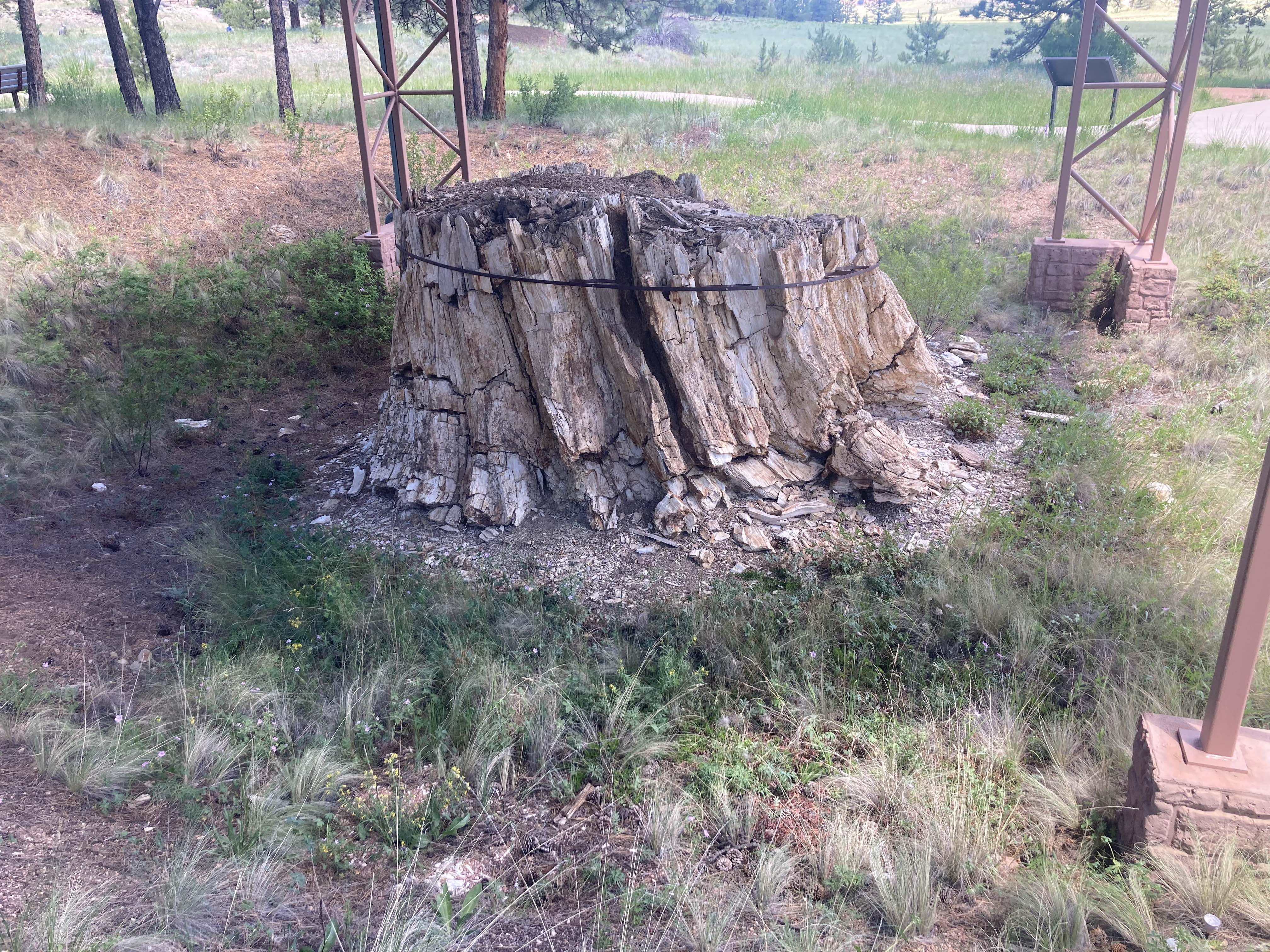Petrified Wood
Contact
University of Arkansas System Division of Agriculture
Cooperative Extension Service
2301 S. University Ave.
Little Rock, AR 72204

Petrified Wood
This morning I’m writing at a table made of recovered bald cypress wood dredged from the muck of a Louisiana swamp. The logs were cut before the Civil War, but while being floated to sawmills, the heaviest, sappiest trees sank. These logs became embedded in the muck at the bottom of the swamp, slowly responding to the new environment. In the 1990s techniques for finding and retrieving these large, old-growth logs were developed. The wood from these submerged logs is darker and heavier than bald cypress cut from standing trees, but they are a long way from turning to stone. Given enough time the logs would have become petrified, morphing into fossilized stone trees.
Traveling in the western states I’m drawn to sites with big petrified trees. Earlier this week I stopped by the Florissant Fossil Beds National Monument in south-central Colorado to look at some 15-foot-diameter fossil trunks of giant redwoods. Petrified wood — whether broken fragments or entire logs — are not especially rare, but they are always interesting. The western states do not have a lock on petrified wood for many fine specimens have been found along several Arkansas rivers.
The process of turning living tissue into stone is a slow one, probably taking hundreds of thousands of years. For a fossil to form - and petrified wood is a fossil - it must be buried quickly and be in an anaerobic environment so the tissue does not decay. Once entombed in the muck the infill with minerals can begin. In environments with very high concentrations of silicates the process will progress faster whereas in drier environs the replacement will be slow.
The redwoods at Florissant Fossil Beds were growing in a moist, relatively mild climate about 34 million years ago when a series of volcanic eruptions buried the trees in fifteen feet of ash and debris. Lava flows blocked natural drainage ways and a lake formed around the trees. The tops of the trees fell and eventually rotted away but the basal portion of the trunks, encased in the volcanic ash and submerged in the lake water, were mummified. Without oxygen, these wooden stumps did not rot but slowly turned to stone.
Silicates, calcites and pyrites in the volcanic ash dissolved and became concentrated in the muck surrounding the stumps. The saturated solution began to infiltrate the open vessels of the stumps and slowly infill the microscopic cavities of the tissue in a process called permineralization. Once the cavities were filled with minerals the carbon matrix surrounding these microscopic cavities was replaced in a process simply called replacement. The array of colors seen in petrified wood is due to the presence of a whole assemblage of trace elements that were around when the mineral solution was infiltrating the wood.
The Florissant Fossil Bed site is a treasure trove for paleontologists studying life in the past. More than 1,500 species of plants, insects and animals have been painstakingly split from the thin sheets of shale found in the area. The eruption that killed the redwoods and encased their bases in ash was just the first in a series of eruptions that went on for the next several million years. Life, as it will, returned to the new lake dammed by the volcanic flow. Future eruptions spewed more ash into the lake, burying insects and leaves in a shallow sediment. Some of the best plant and insect fossils known have been split from these thin sheets of shale.
Most petrified wood - such as Arizona’s Petrified Forest National Park - are from logs that have washed in from a flooded river and been deposited in a delta region where they were covered by subsequent floods. Standing trunks are only formed when the trees are buried in volcanic ash and the wood is not destroyed by fire.
Last summer I visited an area in Oregon that had been visited by a fairly recent lava flow. The molten stone encased the trunks of the Ponderosa pines, quickly incinerating the trunk. But the lava had cooled enough to form a perfect mold of the tree trunk. Over time these hollow molds can fill with debris that, if buried long enough, can turn to stone as well. This would represent a fossil cast, not petrified wood.
